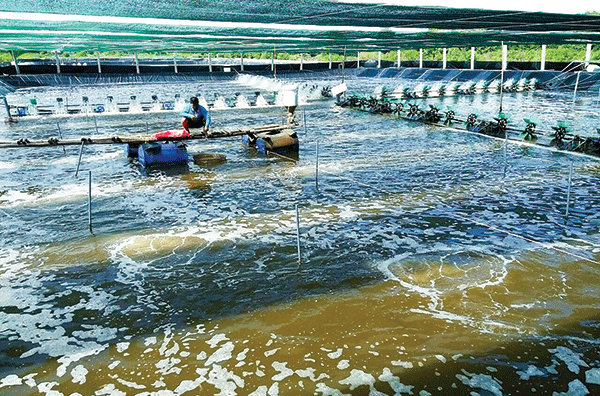OPTIMIZE COSTS – ENHANCE EFFICIENCY THROUGH INTENSIVE SHRIMP FARMING MODEL
In recent years, the intensive shrimp farming model has been continuously developing and becoming more widespread. Saying goodbye to the risks and difficulties of traditional shrimp farming methods, the technology-applied intensive model has proven its practical value as more and more farmers are gradually adopting this method.
Risks and Difficulties Farmers Face with Extensive Shrimp Farming
Extensive shrimp farming is considered a common and traditional method for shrimp farmers. It is seen as a sustainable farming model that preserves the natural values of aquaculture. However, this method still faces many risks and challenges in maintaining stable water quality, especially during seasons with erratic weather patterns, which also encourage the spread of disease, making shrimp more vulnerable.

Using the extensive farming model can easily lead to problems when the natural environment is no longer clean. To sustainably raise shrimp, farmers must prioritize clean water. With the increasing severity of water pollution, this model is highly susceptible to external influences. Bacteria can easily invade, cause disease in shrimp, and spread to other ponds. Importantly, ponds in extensive farming cannot use chemicals or medicine like those in industrial models. As a result, if only one or two shrimp become sick, it can quickly lead to mass die-offs, causing significant economic losses for the farmers.
Intensive Farming Model and Its Outstanding Benefits
With growing market demand, shrimp farmers need to adapt, innovate, and develop new farming models to increase productivity. The intensive model is seen as a suitable choice and is widely adopted as a solution to improve farming efficiency. This model has many unique characteristics compared to traditional ponds. Intensive farming is not affected by tidal fluctuations or seawater retreat; the water level in ponds remains stable. With a regular shape and an average depth of 1.5 - 1.8 meters, these ponds are usually rectangular or square. This design helps paddle wheels efficiently collect waste into the center of the pond.

A standout feature of the intensive model is the application of scientific and technical advances in the management process, requiring farmers to have technical knowledge to ensure sustainability. Modern technology allows farmers to actively monitor and control the entire farming process, minimizing risks and avoiding passive management. Additionally, technology helps optimize productivity through strict monitoring of shrimp health indicators such as gut fullness, population uniformity, size, etc., boosting productivity and improving economic efficiency. One critical condition in shrimp farming is maintaining a stable water source. Today, shrimp farming is increasingly affected by weather fluctuations, which greatly impact water quality and hinder shrimp growth. To address this issue, intensive and super-intensive farming methods are reasonable options that help farmers fully control water quality at any time—healthy water leads to healthy shrimp.
Tomota hopes that with a positive spirit of innovation and creativity, along with the application of technology in management processes, practical benefits can be brought to the stability of shrimp farming. At the same time, this readiness will help address future challenges in traceability.
